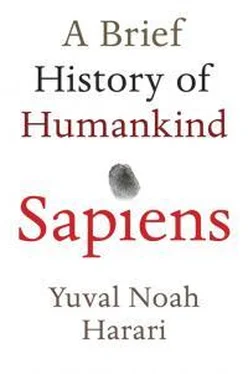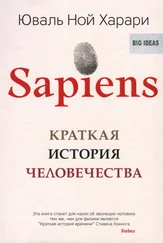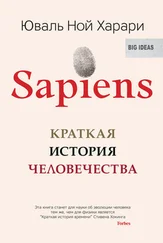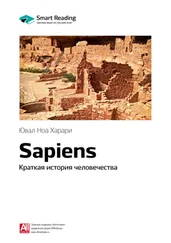Their work was founded on several recent breakthroughs in the fields of statistics and probability. One of these was Jacob Bernoulli’s Law of Large Numbers. Bernoulli had codified the principle that while it might be difficult to predict with certainty a single event, such as the death of a particular person, it was possible to predict with great accuracy the average outcome of many similar events. That is, while Maclaurin could not use maths to predict whether Webster and Wallace would die next year, he could, given enough data, tell Webster and Wallace how many Presbyterian ministers in Scotland would almost certainly die next year. Fortunately, they had ready-made data that they could use. Actuary tables published fifty years previously by Edmond Halley proved particularly useful. Halley had analysed records of 1,238 births and 1,174 deaths that he obtained from the city of Breslau, Germany. Halley’s tables made it possible to see that, for example, a twenty-year-old person has a 1:100 chance of dying in a given year, but a fifty-year-old person has a 1:39 chance.
Processing these numbers, Webster and Wallace concluded that, on average, there would be 930 living Scottish Presbyterian ministers at any given moment, and an average of twenty-seven ministers would die each year, eighteen of whom would be survived by widows. Five of those who did not leave widows would leave orphaned children, and two of those survived by widows would also be outlived by children from previous marriages who had not yet reached the age of sixteen. They further computed how much time was likely to go by before the widows’ death or remarriage (in both these eventualities, payment of the pension would cease). These figures enabled Webster and Wallace to determine how much money the ministers who joined their fund had to pay in order to provide for their loved ones. By contributing £2 12 s . 2 d . a year, a minister could guarantee that his widowed wife would receive at least £10 a year – a hefty sum in those days. If he thought that was not enough he could choose to pay in more, up to a level of £6 11 s . 3 d . a year – which would guarantee his widow the even more handsome sum of £25 a year.
According to their calculations, by the year 1765 the Fund for a Provision for the Widows and Children of the Ministers of the Church of Scotland would have capital totalling £58,348. Their calculations proved amazingly accurate. When that year arrived, the fund’s capital stood at £58,347 – just £1 less than the prediction! This was even better than the prophecies of Habakkuk, Jeremiah or St John. Today, Webster and Wallace’s fund, known simply as Scottish Widows, is one of the largest pension and insurance companies in the world. With assets worth £100 billion, it insures not only Scottish widows, but anyone willing to buy its policies. 7
Probability calculations such as those used by the two Scottish ministers became the foundation not merely of actuarial science, which is central to the pension and insurance business, but also of the science of demography (founded by another clergyman, the Anglican Robert Malthus). Demography in its turn was the cornerstone on which Charles Darwin (who almost became an Anglican pastor) built his theory of evolution. While there are no equations that predict what kind of organism will evolve under a specific set of conditions, geneticists use probability calculations to compute the likelihood that a particular mutation will spread in a given population. Similar probabilistic models have become central to economics, sociology, psychology, political science and the other social and natural sciences. Even physics eventually supplemented Newton’s classical equations with the probability clouds of quantum mechanics.
We need merely look at the history of education to realise how far this process has taken us. Throughout most of history, mathematics was an esoteric field that even educated people rarely studied seriously. In medieval Europe, logic, grammar and rhetoric formed the educational core, while the teaching of mathematics seldom went beyond simple arithmetic and geometry. Nobody studied statistics. The undisputed monarch of all sciences was theology.
Today few students study rhetoric; logic is restricted to philosophy departments, and theology to seminaries. But more and more students are motivated – or forced – to study mathematics. There is an irresistible drift towards the exact sciences – defined as ‘exact’ by their use of mathematical tools. Even fields of study that were traditionally part of the humanities, such as the study of human language (linguistics) and the human psyche (psychology), rely increasingly on mathematics and seek to present themselves as exact sciences. Statistics courses are now part of the basic requirements not just in physics and biology, but also in psychology, sociology, economics and political science.
In the course catalogue of the psychology department at my own university, the first required course in the curriculum is ‘Introduction to Statistics and Methodology in Psychological Research’. Second-year psychology students must take ‘Statistical Methods in Psychological Research’. Confucius, Buddha, Jesus and Muhammad would have been bewildered if you told them that in order to understand the human mind and cure its illnesses you must first study statistics.
Knowledge is Power
Most people have a hard time digesting modern science because its mathematical language is difficult for our minds to grasp, and its findings often contradict common sense. Out of the 7 billion people in the world, how many really understand quantum mechanics, cell biology or macroeconomics? Science nevertheless enjoys immense prestige because of the new powers it gives us. Presidents and generals may not understand nuclear physics, but they have a good grasp of what nuclear bombs can do.
In 1620 Francis Bacon published a scientific manifesto tided The New Instrument . In it he argued that ‘knowledge is power’. The real test of ‘knowledge’ is not whether it is true, but whether it empowers us. Scientists usually assume that no theory is 100 per cent correct. Consequently, truth is a poor test for knowledge. The real test is utility. A theory that enables us to do new things constitutes knowledge.
Over the centuries, science has offered us many new tools. Some are mental tools, such as those used to predict death rates and economic growth. Even more important are technological tools. The connection forged between science and technology is so strong that today people tend to confuse the two. We often think that it is impossible to develop new technologies without scientific research, and that there is little point in research if it does not result in new technologies.
In fact, the relationship between science and technology is a very recent phenomenon. Prior to 1500, science and technology were totally separate fields. When Bacon connected the two in the early seventeenth century, it was a revolutionary idea. During the seventeenth and eighteenth centuries this relationship tightened, but the knot was tied only in the nineteenth century. Even in 1800, most rulers who wanted a strong army, and most business magnates who wanted a successful business, did not bother to finance research in physics, biology or economics.
I don’t mean to claim that there is no exception to this rule. A good historian can find precedent for everything. But an even better historian knows when these precedents are but curiosities that cloud the big picture. Generally speaking, most premodern rulers and business people did not finance research about the nature of the universe in order to develop new technologies, and most thinkers did not try to translate their findings into technological gadgets. Rulers financed educational institutions whose mandate was to spread traditional knowledge for the purpose of buttressing the existing order.
Читать дальше



![Юваль Ной Харари - Sapiens. Краткая история человечества [litres]](/books/34310/yuval-noj-harari-sapiens-kratkaya-istoriya-cheloveche-thumb.webp)





![Юваль Ной Харари - 21 урок для XXI века [Версия с комментированными отличиями перевода]](/books/412481/yuval-noj-harari-21-urok-dlya-xxi-veka-versiya-s-ko-thumb.webp)


